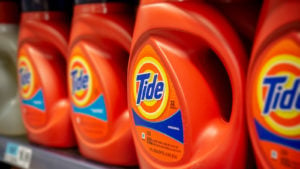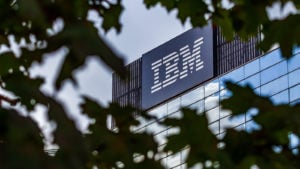
While the upcoming new year generally brings optimistic sentiment to the market, investors should be prepared for anything, which is why solid dividend stocks represent an incredibly relevant topic. Much like playing the hot corner, you’ve got to be ready for anything.
In baseball, hard-hit balls can end up anywhere on the field. However, they generally tend to scream toward third base. That’s why you’ve got to have some quick hands to play this position. As well, you’ve got to be smart because that’s the final hurdle to be cleared before running home. Investors should adopt such a similar approach to the wild financial markets.
I say that mainly because we just don’t know how circumstances will pan out. Sure, solid dividend stocks to buy seems an ultra-conservative mindset. However, it’s not a sure thing that the Federal Reserve will lower interest rates. Depending on how the labor market runs, increased borrowing costs wouldn’t be out of the question.
With that in mind, these are the trustworthy dividend stocks to target.
Waste Management (WM)

What it is: A self-explanatory company, Waste Management (NYSE:WM) handles the trash that households and businesses create. Given rising population trends, WM should enjoy a predictable business profile. Thus, it’s a safe place to start regarding solid dividend stocks to buy.
Relevance: Everybody that consumes products eventually generates trash; that’s physics for you. In terms of hard data, Statista points out that the North American waste management market size reached a valuation of $208 billion in 2019. By 2027, this sector could hit nearly $230 billion. If so, that would come out to a compound annual growth rate (CAGR) of 5.3%. No, you probably won’t get rich off of WM. But again, the business is predictable.
Pros: Unsurprisingly, Waste Management is consistently profitable over the past 10 years. Subsequently, it offers a dividend yield of 1.59%. It’s low but neither the yield nor the business is going anywhere.
Cons: Analysts on average only see shares reaching $182.88, which is pedestrian.
Procter & Gamble (PG)

What it is: A multinational consumer goods corporation, Procter & Gamble (NYSE:PG) is a mainstay among solid dividend stocks to buy. Manufacturing a wide range of personal and consumer health products, along with myriad other household goods, P&G is practically permanently relevant.
Relevance: Where do we start? If you brush your teeth every day, you’re likely using one of P&G’s toothcare brands. If you use the facilities – and without getting too graphic want a “comfortable” experience – you’re also likely to use P&G brands. If you want some hard numbers, the global consumer goods market should rise by a CAGR of 3.23% between 2023 and 2028. That sounds very reasonable.
Pros: Obviously, the case for PG as one of the dividend stocks centers on the underlying business predictability. It’s been consistently profitable, year in and year out. As a result, it pays a yield of 2.6%, which isn’t too shabby considering how low risk it is.
Cons: Over the past 52 weeks, PG lost about 5% of equity value, which is disappointing.
Johnson & Johnson (JNJ)

What it is: A multinational pharmaceutical and medical technologies corporation, Johnson & Johnson (NYSE:JNJ) is another mainstay among dividend stocks to buy. Thanks to the pertinence of the business, J&J might enjoy some economic insulation.
Relevance: With the company spinning off its consumer health products division, J&J can focus on its core businesses. First, the U.S. pharmaceutical industry may expand at a CAGR of nearly 6% between 2023 and 2028, resulting in market value of $802.8 billion. Second, EY reports that the medtech market reached a valuation of $573 billion in 2022. Even with modest growth projected following the post-pandemic high, J&J should benefit handsomely from its brand power.
Pros: Benefiting from excellent profit margins across the board, J&J is a consistently reliable company. Even so, the market prices shares at a discount at 11.54X trailing-year earnings. That’s lower than 81% of sector rivals. And the yield isn’t bad at 3.07%.
Cons: JNJ has been struggling for traction, losing about 13% of equity value on a year-to-date basis.
Coca-Cola (KO)

What it is: An icon in the soft drink industry, Coca-Cola (NYSE:KO) really needs no introduction. As a symbol of American capitalism, it’s also one of the solid dividend stocks to buy for market ambiguity. No matter what happens, Coca-Cola will be around.
Relevance: As I’ve stated many times before, if we encounter economic hardships, KO should benefit from the trade-down effect. Basically, people will turn to grocery store products to get their caffeine fix. Considering that’s where Coca-Cola dominates, KO should be a winner. Either way, the soft drink space is worth $328.1 billion just in the U.S. So, KO will have zero problems securing relevance.
Pros: As with the other dividend stocks, Coca-Cola’s knockout punch centers on its excellent margins and consistent profitability. From these attributes, we have a dividend yield of 3.19%.
Cons: Due to the predictability of the business, the market prices KO at a modest premium to earnings. Also, the payout ratio of 69.43% is a bit on the high side.
NextEra Energy (NEE)

What it is: An energy firm which has pivoted strongly to renewable sources, NextEra Energy (NYSE:NEE) ranks among the most important dividend stocks for investors seeking long-term opportunities. From a bullish perspective, NEE’s volatility this year may represent a de-risked prospect.
Relevance: I’m not going to go so far as to say renewable energy is our exclusive future. However, it’s clear that the political and ideological winds support various go-green initiatives. That alone makes NEE worth a long look. For hard data, Grand View Research states that the global renewable energy sector is currently worth $1.21 trillion. By 2030, the segment could hit $3.6 trillion, representing a CAGR of 17.2%.
Pros: While NextEra doesn’t print the prettiest financial stats, it is consistently profitable. And thanks to this consistency, it’s able to offer a yield of 3.13%. Also, analysts rate shares a moderate buy with a $69.88 price target, implying 17% upside.
Cons: Still, NEE is down 29%, which admittedly represents an unsightly performance.
IBM (IBM)

What it is: One of the top technology firms in the world, IBM (NYSE:IBM) commands respect for its legacy innovations. And it’s still a contemporary powerhouse though its peers have overshadowed Big Blue. Nevertheless, IBM deserves consideration as one of the solid dividend stocks, especially because it’s been on the move recently.
Relevance: Before the huge mania over artificial intelligence and machine learning erupted this year, IBM stood at the forefront of this innovation through protocols such as Watson. However, it also offers myriad other relevancies, such as utilizing blockchain technology for practical applications. Sure enough, the global blockchain market reached a valuation of $11.14 billion last year. And by 2030, the segment could be worth $469.49 billion.
Pros: A major advantage for IBM as an attractive investment is that it’s undervalued; specifically, it trades at only a forward earnings multiple of 16.31x. Additionally, the company offers a strong dividend yield of 4.12%.
Cons: Analysts are somewhat pensive about IBM’s surge, with the average $156.71 price target implying 3% downside.
Realty Income (O)

What it is: Structured as a real estate investment trust (REIT), Realty Income (NYSE:O) focuses on free-standing, single-tenant commercial properties in the U.S., Spain and the U.K. Primarily, what may attract investors is that it’s one of the dividend stocks that pays out monthly.
Relevance: I’m not going to sit here and tell you that Realty Income is an exciting enterprise. However, it’s quite possible that irrespective of economic conditions, Realty should perform relatively well. Because its properties feature stores that cater to the essentials – grocery giants, big-box retailers – the business practically enjoys permanent relevance.
Pros: Financially, Realty benefits from two major attributes: solid revenue growth compared to other REITs and consistent profitability. Especially from the latter, investors have confidence in the generous 5.33% yield.
Cons: Shares lost about 11% since the beginning of the year so investors need to be cautious. Also, O trades at a pricey trailing-year earnings multiple of 43.1x.
On the date of publication, Josh Enomoto did not have (either directly or indirectly) any positions in the securities mentioned in this article. The opinions expressed in this article are those of the writer, subject to the InvestorPlace.com Publishing Guidelines.





